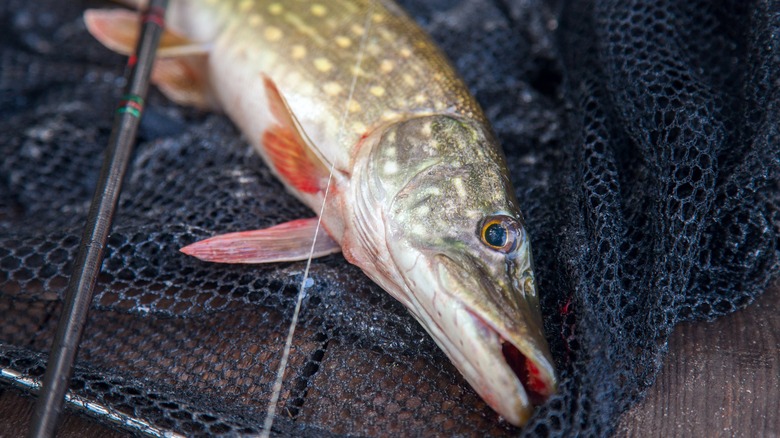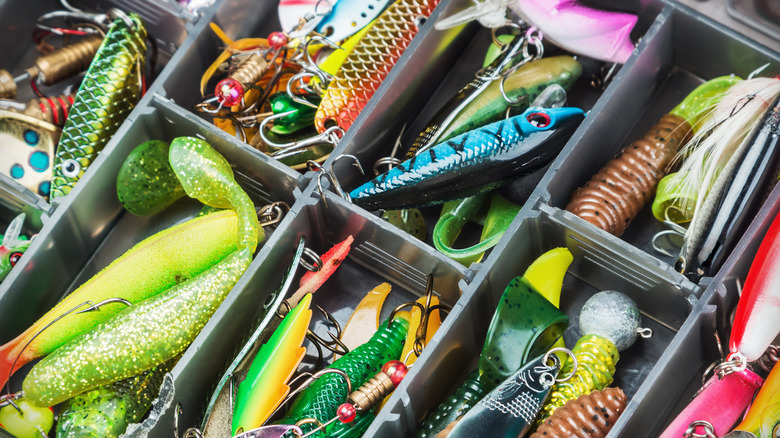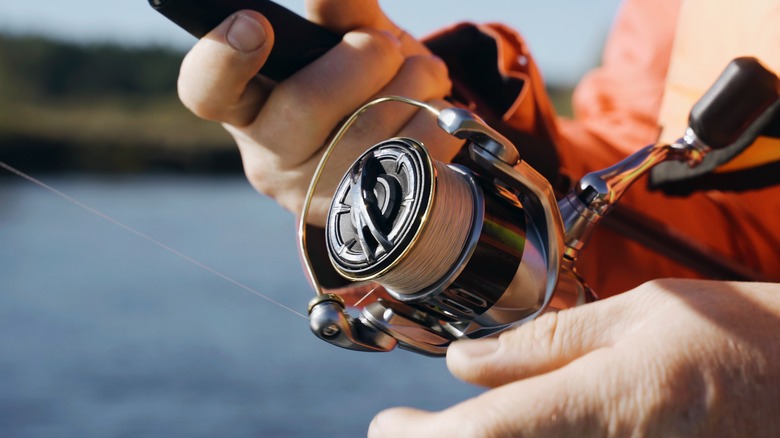2 Fishing Tips To Maximize Your Catch Regardless Of Where You Fish
We may receive a commission on purchases made from links.
Whether you are just getting into fishing or are an experienced angler, odds are you're looking for a way to catch more and bigger fish. There certainly is no shortage of advice on how to accomplish that. While there are some limiting factors to much of the advice that is out there, after spending decades as a professional fishing guide, I believe the easiest way to improve your catches is to use lighter line and smaller lures.
Again, there is a dizzying array of additional advice that can be followed. But, there are caveats with much of it. For one, much of the wisdom that has been handed down through the years is no longer applicable or, at best, less effective today than it was in years past. On the flip side, some segments of the sport, bass fishing, for example, have become so technical in nature that the methods used by the top pros are not very practical for the average weekend fishermen. Also, angling advice that is dished out is often very specific to a certain region, species of fish, or type of fishing.
While all of this advice can likely help in some form or fashion depending on the time of year, target species, or type of fishing you are doing, following the wrong advice or applying good advice at the wrong time is a fishing mistake to avoid. With that in mind, two things you can do no matter what species you are targeting, area you are in, or time of day you are fishing is to use lighter line and smaller lures to catch more and bigger fish.
Small lures catch more and bigger fish
"Big bait, big fish" is an axiom which has been passed around for generations on virtually every body of water where fish are found. While big fish do indeed eat big baits, they don't always. In fact, big lures and baits are typically most productive at times when fish are very aggressive. Much more often, smaller lures are the best baits to use in order to catch more and bigger fish. This is part of an approach typically referred to as finesse fishing, which didn't become widely known or popular until the late 1990s and early 2000s.
The timing of the rise in finesse fishing isn't random. When the "big bait, big fish" slogan rang most true, things were much different. There were more fish in most lakes, rivers, and bays, coupled with fewer fishermen. Today, almost every body of water in the U.S. has seen not only a rise in fishing pressure, but also an increase in the sheer volume of human activity in the form of various watersports such as boating, water skiing, jet skiing, and tubing. All of this pressure and activity affects how fish behave. In these situations, they tend to become much less aggressive with their feeding activity.
The behavior of fish on highly pressured water is very similar to what they exhibit during times of extreme heat or cold or high barometric pressure. So, while originally finesse fishing and downsizing lures and baits was originally reserved for late summer, mid-winter, or post-front conditions, it has now become the most consistent way to catch more and bigger fish throughout the year around on most bodies of water in the U.S.
Light line gets fish to bite
The other angling aspect that is often classified as finesse fishing is utilizing lighter line. It is often thought the only reason to downsize line is to help cast lighter lures and baits. In reality, there are a lot of advantages to using lighter line regardless of what size or type of lure or bait you are using.
Like downsizing lures, downsizing line has become more necessary due to the rise in boating and fishing activity, which makes fish more skittish and less inclined to feed aggressively. The most obvious advantage is lighter line, with its smaller diameter, is not as visible. This is particularly true of fluorocarbon line and leader, such as Berkley Vanish. Additionally, lighter line is much more supple, which allows the lure or bait to move more subtly, and can also be cast further, putting your bait further away from you. These aspects lead to lighter line allowing a much more natural-looking presentation, which often results in fish striking baits they otherwise may not.
There are a couple of considerations that cannot be ignored when using lighter line, however. For one, you need to pair lighter line with the proper rod. Essentially, this means a rod that has a softer tip section to help cast the light line and cushion shock that may cause the line to break. You will also need to lighten your drag adjustment to prevent breakoffs. This can be a challenge when it comes to landing fish in heavy current or structure. However, you have to get a fish to bite before you worry about landing it, and using lighter line and smaller lures will certainly help with that.


